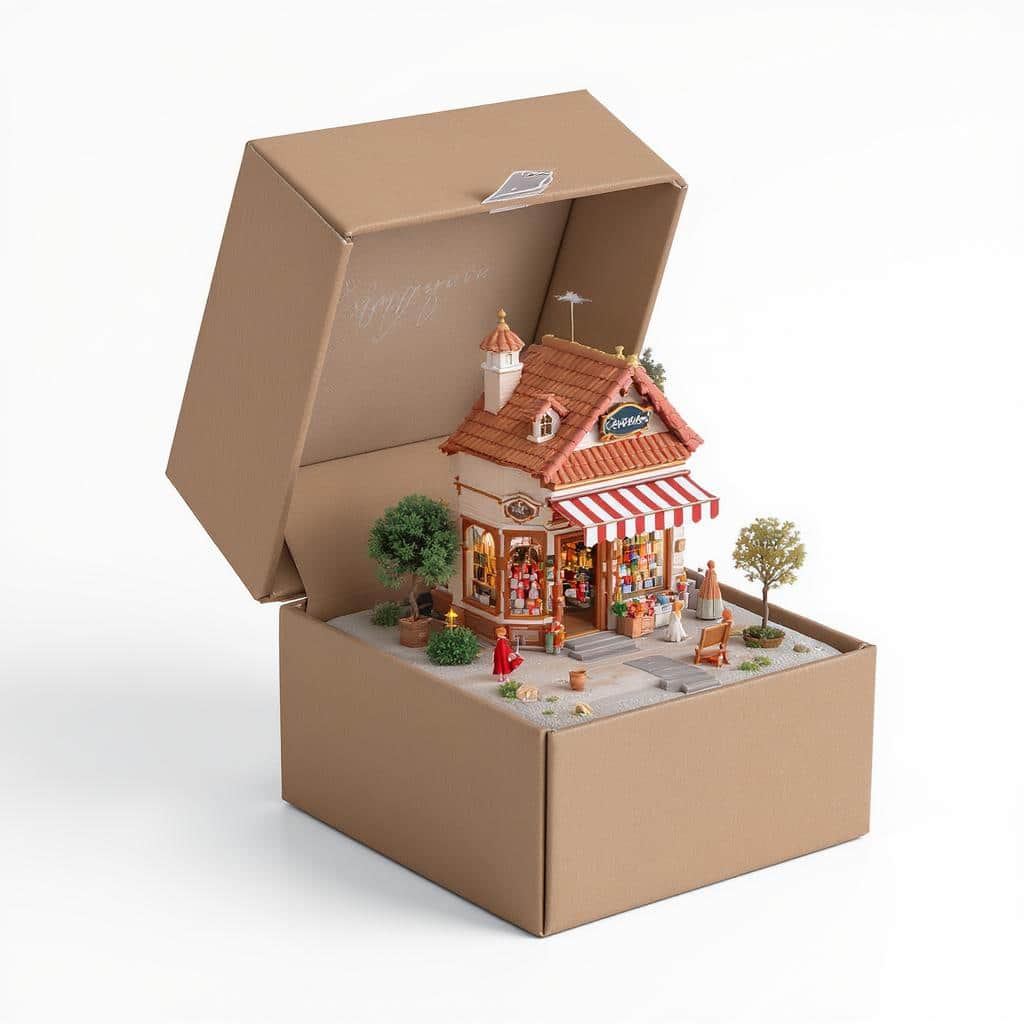How can retail merchandising speak to our need to reconnect?
Understanding consumer psychology
Retail merchandising as an art form
Using architecture to guide the conversation
How can retail merchandising speak to our need to reconnect?
Victor Gruen, founder of the American mall, understood retail merchandising. His birthplace of Vienna was laced with plazas, parks, and greenery – creating an open, communal space that inspired Gruen to redesign the shopping experience in the United States. Imagining centers with businesses, schools, medical facilities, and shopping all intertwined, Gruen’s initial vision was much grander than a sprawl of sparkly stores. He wanted a place where people could come together, walk, interact, and expand themselves. After first establishing window displays as a means of attracting foot traffic, Gruen went on to develop an indoor plaza with places for consumers to congregate, socialize, shop, and eat – and the quintessential mall was born.
For the next 40 years this fixture of middle-income culture unfurled itself across suburban landscapes, depleting city centers in ways that directly antagonized what Gruen hoped to achieve with his initial creation. Gruen, himself, came to resent what the malls morphed into. These behemoth edifices felt indomitable – even to him. But when E-commerce and social media entered the scene, it appeared the mall had finally met its match. The global pandemic and social isolationism of COVID-19 only furthered the mall’s descent, with the vacancy rate rising above six percent in 2020 and currently standing at 8.3%
But Gruen’s hope for a more community-centric retail merchandising platform may yet come to fruition. As the dust from this pandemic settles – after all the political arm wrestling over quarantine and mask mandates – one thing has become clear: we’re starving for spaces to reconnect. Statista notes, “Now more than ever mall operators are seeing the need to shift their shopping centers from a shopping destination to a ‘cultural’ hub or a retailtainment (retail + entertainment) center.” With testing software readily available, evaluating the depth of consumers’ thirst for social outlets has never been easier nor more emergent.
What sets the brick-and-mortar shopping experience apart from its online competitors is its ability to be fully immersive. Consumers can smell, taste, touch, hear, and feel products and interact directly with friends, associates, employees, and customer service representatives. An analysis by Kearney found 81% of Gen Z prefer to shop in-store, and 28% “very much” see shopping as a way to disconnect from social media and reconnect face-to-face. To maximize this interactive experience that shopping provides, effective merchandising can capitalize on three key components: psychology, art, and architecture.
Understanding consumer psychology
Strong retail merchandising understands innate human needs and drives. But the strongest merchandising utilizes this understanding – not to manipulate the consumer into buying more – but to rise to the challenge of meeting those needs. We’ve each stood in the checkout line and been asked, “Were you able to find everything you needed?” And we’ve each had times when we struggled to find what we needed, found just what we needed, or found more than we needed. While this question may be awkward to answer in the moment with a string of customers waiting behind us and our cart full of stuff, it is potentially the most important question a retailer can ask us: are we able to find what we need, and if part of what we need is social connection, how is retail merchandising speaking to that need?
In 1986, George Sproles and Elizabeth Kendall explored the underlying motives that drive consumer behavior. They developed a Consumer Styles Inventory based on consumer decision-making styles, identifying eight key motivators for consumers: quality or perfectionistic, brand conscious, recreation conscious, price-value conscious, novelty or fashion conscious, impulsive, confused (by having too many choices), and habitual or brand loyal.
If we now add to this list social influence and connection, merchandisers have no small task in determining how to design and present products in ways that address consumers’ diverse motives. One consumer, for example, may exhibit multiple motives on the same outing. They may purchase gourmet cheese on impulse or as a novelty; buy the same brand of bread out of habit; be brand-conscious about their shampoo; be quality conscious about their dish detergent; be confused by all the meat marinade options; and be price conscious when buying toilet paper.
For merchants to know the best way to present their products, they need a reliable method of determining trends in consumer motives. Retail merchandising software that focuses on A/B testing can help. It can determine things such as what shoes are being purchased as a novelty and which are being purchased out of brand loyalty. But more importantly, testing software has an opportunity to illuminate consumers’ psycho-social needs at this unique point in history – to examine if retail spaces can become community centric in ways that not only support the business and the economy but that also support greater human connection. Can stores integrate social lounges or other socially enticing features that enable consumers to rest, laugh, chat, engage? If they do this, what is the lift in sales? These are the questions that A/B testing merchandising software for retailers can help answer.
Retail merchandising as an art form
While artistry and architecture will have some overlap, artistry refers to any form of ingenuity that makes a product attractive. Artistry defines the mood, tone, and ambiance of a space or product; it often aligns the brand with the purpose. The aesthetic of a sporting goods retailer, for example, will differ from that of a bridal shop.
Artistry often satisfies the five R’s: having the right product, and the right quantity, in the right place, at the right time, and the right price. When those R’s are aligned, the overall aesthetic and appeal is high. How and where is the ideal placement for a product? Should items be displayed by color, style, size, function? What products are consumers most drawn to? Planogram software enables retailers to play with the artistic elements of product presentation. But the best retail merchandising software for knowing if that planogram design will then drive sales, is A/B testing software.
Using architecture to guide the conversation
Architecture refers to both the features and functions of a building or product. It takes everything from lighting to floor planning into consideration, and it includes static features – such as number of windows and accessibility access – to more fluid features such as seasonal displays and signage. The right architecture can transform a business. Art Gensler, the renowned architect of the first 100 Apple stores, understood this. He took a brand that had been faltering for years and created an immersive experience that manufactured swagger, and Apple is still flourishing.
Victor Gruen also understood that the better the immersive design, the better the profits, and his name designates what is now known as the Gruen effect. This refers to creating an environment that is so hypnotic, the consumer becomes distracted from their original intentions. IKEA has mastered the Gruen effect, combining a maze-like layout with daycare and Swedish meatballs. Shoppers may only need a floor mat but may make the excursion a full-day outing of browsing, maze-maneuvering, and dining – likely leaving the store with a full belly and much more than a floor mat.
A world exhausted with quarantine fatigue may be even more eager to gravitate to these types of immersive retail experiences. Then again, that world may still be germ-cautious and not quite ready to throw their children into a ball pit of little runny noses. The only way to know for sure is to test. Retail merchandising software that conducts A/B testing can provide definitive data on consumers’ readiness to re-engage with immersive architecture and social elements.
For a while, the internet and all its offerings has felt like the godsend consumers didn’t know they needed. But the isolationism of COVID-19 has led many to realize that these two-dimensional connections aren’t socially fulfilling, providing retailers with a unique opportunity to rebuild our communities and replicate the neighborly Vienna retail experience of Gruen’s childhood.
To learn more about how testing is changing the retail landscape, try these resoucres:
Woolworth’s innovates to improve its customer experience, driving gains in a key product category
Testing to thrive in today’s retail landscape
Psychology is WEIRD, but retail experimentation is DUMPY
How Maverik changed visual merchandising company-wide, without doubt




